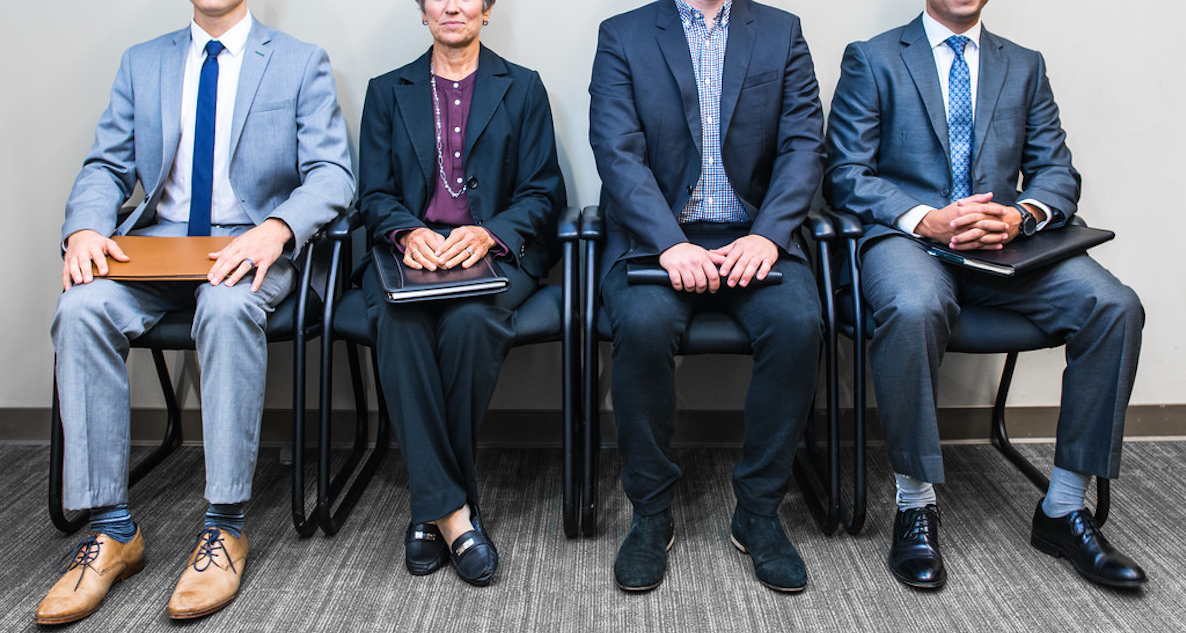During one of this summer’s many biblical rainstorms, I discovered a rather substantial stream of water trickling from my ceiling. Drawing on my deep reserves of skill as a handyman, the solution presented itself immediately: I found a bucket. Problem solved. And when the bucket filled up with rain water, I simply emptied it and placed it back under the drip. Problem solved again.
It was only later I learned a name for that fill-a-bucket approach: “single loop learning.” Coined by the late renowned Harvard professor and business theorist Chris Argyris, the term, also similar to “incremental learning,” describes a problem-solving strategy that, in Argyris’ words, “assumes that our assumptions are valid and that the underlying goals, plans, values, and belief systems driving our actions are not drawn into question. It focuses on becoming more competent, efficient and capable in the execution of a preset plan and process, and on mastering the technique for doing so without questioning whether it is the right thing to do.”
In household hydro-remediation terms, single loop learning accepts as given that the problem to be solved is the collection and containment of intruding rain water. Under this rubric, mastery of the solution means choosing a sufficiently large bucket (ideally, one that does not itself leak), accurately placing it under the proper location in the roof, emptying it before it spills over, and remembering where you put the damn thing for the next time it rains.
As a means for keeping your floors dry, this tactic works well enough, provided you’re home when it rains and you remember where you stored the bucket. But it is obviously a deeply circumscribed approach to identifying a problem and thinking about how to solve it.
Few would argue that when it comes to charting our way in the second decade of the 21st Century, we’re still working from a sorely outdated road atlas. From the sclerosis of a legislative body fueled by egos to a tax and regulatory environment that frightens away investment without making a dent in our woeful poverty statistics, we are flailing away in a system that seems to serve no greater good.
By now, you might be wondering: What does your roofing problems have to do with us and our city? Well, bear with me. It turns out that there are alternatives to single loop learning, and they just might hold the key for our collective civic future.
One is called “double loop” or “adaptive” learning. Unlike single loop learning, which limits its focus to improvements in remediating the symptoms of a problem, double loop learning goes beyond basic skill mastery to interrogate why the problem exists to begin with. It is a conception of learning based around a skepticism toward, and modification of, received wisdom, assumptions and values. Rather than conditioning notions of success or advancement on learning to perform prescribed tasks more efficiently within a rigid, pre-existing system, adaptive learning demands reflection, open-mindedness and creativity. Put simply, single loop learning focuses on doing things right, while double loop learning focuses on doing the right things.
![]()
To continue the (admittedly facile) rain water metaphor, an adaptive learning approach would not have had me scurrying around for a bucket, but climbing onto the roof to find and fix the leak, by which of course I mean calling a professional to climb onto the roof to find and fix the leak.
More recently, intellectual heirs of Argryis have advanced an argument for triple loop, or transformational, learning. Whereas both incremental and adaptive learning are predicated upon existing systems—the former seeks to optimize results within the system while the latter seeks to modify the system toward an optimal state—transformational learning, in the words of management consultant and author Fred Kofman, “questions our notion of what is real and who we are, and it calls into question why we are predisposed to view the world in a particular way.” While adaptive learning critiques and changes systems to solve problems, transformational learning views the learner herself as the system to be subjected to critique and change.
To be sure, triple loop learning is abstract, meta and existential. In our roof analogy, a transformational perspective would have me look beyond the constraints of my own roof to consider the relationship among the roof, the tree clogging our gutters and the impact of climate change on Philadelphia’s average yearly rainfall.
Krasner’s virtually unprecedented overhaul of the DA’s remit is a case study in adaptive, double loop thinking. By asking why the problems of crime and mass incarceration exist in the first place, Krasner is confronting and seeking to invert long-held assumptions about the causes of societal disorder.
Home maintenance aside, we’re seeing manifestations of triple loop learning in nearly every aspect of our increasingly tech-saturated world. Take navigation technology. Twenty years ago, if you wanted to figure out how to get somewhere in your car, you’d unfold and pore over a map; a perfectly adequate solution, so long as it was up to date and the identified route was free of any unknown closures, detours or other obstacles. Maps were a strictly static technology.
In the early 2000’s, that technology became dynamic with the new and widespread availability of personal GPS systems, which rendered paper maps obsolete. And as their interfaces became more refined, drivers could rely on GPS, whether in self-contained devices or on their smartphones, for all manner of data to facilitate travel.
Now, dynamic technology is being supplanted by social technology as navigation apps like Waze harness the unrivaled power of neural networks and crowd-sourced information to provide drivers with up to the minute data on impending traffic jams, accidents and the like. Truly, there has never been a better time to dodge a state trooper with a laser gun on the Jersey Turnpike.
![]()
If loop theory can be applied to modes of learning and consumer technology, it makes sense to ask if it has utility in the way we conceptualize, organize and execute the administration of municipal life here in Philadelphia. Few would argue that when it comes to charting our way in the second decade of the 21st Century, we’re still working from a sorely outdated road atlas. From the sclerosis of a legislative body fueled by egos, small ball grievances and the preservation of political fiefdoms, to the outsized power of a poorly oiled Democratic party machine, to the self-serving influence of corrupt and co-opted union leadership, to a tax and regulatory environment that frightens away investment without making a dent in our woeful poverty statistics, we are flailing away in a system that seems to serve no greater good.
There are any number of issues for which Philadelphia might try to break out of its single loop habits, but one area that would lend itself particularly well to adaptive and transformational approaches is criminal justice. It’s a well known and shameful fact that Philadelphia is among the most heavily incarcerated cities in the country. Endemic poverty, institutional racism, the war on drugs and naked political ambition on the part of prosecutors have all conspired to make mass incarceration a major problem on a municipal scale.
For generations, this city’s draconian criminal justice policies and practices have been used to grind down our most vulnerable communities while burnishing the resumes of politicos with aspirations toward higher office. From Rizzo to Rendell (a personal hero) to Abraham, figures with police and prosecutorial power at their fingertips have operated within a justice system based upon retribution and alienation.
![]()
Of course, this kind of approach wasn’t invented in Philly, but it exemplifies single looping thinking at its most blinkered. Simply locking people up and throwing away the key or sending them to waste away on death row may look like justice, but its impact on communities, families and individuals couldn’t be any less just, or effective. The National Institute of Justice reports that about two-thirds of prisoners will reoffend by the third year after release, and that more than four out of five will reoffend by the ninth year after release. Shouldn’t the solution be inversely proportional to the problem being solved?
When radical civil rights lawyer Larry Krasner was elected district attorney in 2017, this was the question he and the army of reformers who backed his campaign sought to answer. Pointing out that our state spends as much to incarcerate a prisoner for a year as it would paying the salary of a teacher, police officer or social worker, Krasner’s aim has been to work within the system, and in his case, from the top of it, to re-organize, re-prioritize and re-define not only the job of the Philadelphia district attorney but our very conception of crime, punishment and justice.
Dr. Larry Lior and his colleague Dr. Kirtley Thornton have developed a scientific protocol to attack not the economic and social conditions that reformers like Krasner regard as the root causes of pathological behaviors, but the neurological conditions of our individual minds.
Krasner’s virtually unprecedented overhaul of the DA’s remit is a case study in adaptive, double loop thinking. By asking why the problems of crime and mass incarceration exist in the first place, Krasner and his increasing cohort of like-minded prosecutors elsewhere in the country are confronting and seeking to invert long-held assumptions about the causes of societal disorder. It is certainly premature to evaluate the results of these reforms, but if they succeed, old institutions will be turned upside down and torn down.
Believe it or not, Larry Krasner’s double loop approach to criminal justice reform doesn’t even represent the current outer limits of conceptualizing and contending with crime in our city. Philadelphia native Dr. Larry Lior and his colleague Dr. Kirtley Thornton have developed a scientific protocol to attack not the economic and social conditions that reformers like Krasner regard as the root causes of pathological behaviors, but the neurological conditions of our individual minds. Lior and Thornton contend that changing those behaviors requires changing our mental “hardware” that processes environmental stimuli before “software upgrades” of counseling, education and vocational training can be effectively installed. Their program uses electroencephalograph technology (yes, wires stuck to your head) to detect abnormal brain wave patterns corresponding to addiction and other impairments that correlate to criminal tendencies. By tracking those patterns, recommending and rewarding corrective paths back to brain wave symmetry, their method seeks to fortify strong neurologic foundations to better receive therapy, education, and other prosocial inputs.
Lior and Thornton’s protocol is certainly controversial, largely untested in the field as yet, and susceptible to questions about its ethical rigor, but if it sounds like the stuff of science fiction, that may have less to do with the imagery of electrodes and sinusoids than with its drastic departure from incremental and even adaptive approaches to criminal justice reform. Theirs is a triple loop conceptualization that unmoors us from our individual and collective preconceived notions about what causes crime and what crime even is.
To be sure, radical transformations like Lior and Thornton’s, and even merely radical adaptations like Krasner’s, may not ultimately achieve the goal of fostering a safer, more stable, more prosperous and more equal city, but if nothing else, they will expand the realm of possibility when it comes to imagining and catalyzing positive societal change. And if we can expand that realm in the intractably difficult area of criminal justice, there’s no telling what new frontiers we might discover in education, housing, health and sustainable economic growth. Taking the first steps towards those brave new worlds is simply a matter of collectively opening our minds, and forgetting about that damn bucket.
Photo by Kristi Petrillo







